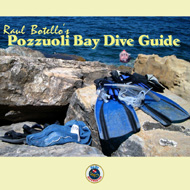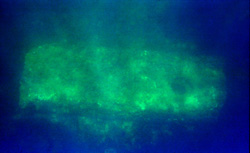
by Raul Botello Jr.


| |
| Pozzuoli |
|
Miseno |
| Portus Julius |
|
Punta del Epitaffio |
| Phlegrea |
|
Bradyseism |
| In antiquity, Pozzuoli enjoyed the privilege of being the maritime shipping and trade center of the western world. The city was virtually destroyed by the Monte Nuovo eruption. A view of "Old Pozzuoli" from the sea shows erosion and collapse that has occurred over the centuries. Traces of buildings and facilities remain clinging to the edges awaiting their eventual collapse as well, into the clear blue waters below. Beneath the waters lies the original Greek settlement that first appeared at Pozzuoli. |
| BAIA It is worth mentioning that Caesar's Palace was built on the very spot where the Aragonese Castle now stands. The palace was described as a super fortress but was destroyed by time and the elements. Traces of this balneum near the harbor give clues of the sheer luxury of Baia. The balneum might have been an element of Nero's residential estate as it is very close by. Nero diverted funds destined for embellishments and enhancements to Sudatori di Tritoli and other public works projects to instead upgrade his own estate. |
| MISENO The Naval base at Portus Julius was short lived. Within a short time the Roman Senate decided that Lago Lucrinus depths were too unreliable for a military that needed high mobility. The Senate chose Misenum as the site to relocate the central facilities and headquarters, only a few hundred meters from the entrance to Lucrinus and Portus Julius. Accordingly, Misenum stepped into the spotlight and became the center of power and intrigue for the Roman Empire. |
| PORTUS JULIUS The roads, building floors, basements and foundations are clearly visible from the air when the sea is calm. Depths range from 2 to 3 meters. |
BACOLI Marina di Bacoli contains some of the most accessible yet intriguing of underwater ruins. Thought by some scholars to be the fabled Bauli of antiquity, the site bears all the characteristics of a patrician center. The so-called "Tomb of Agrippina" is just on the shore above the marina. Then, in shallow depths of 3 to 4 meters, the remains of Temple of Hercules, once a small yet luxurious bath facility, its nymphaeum rotunda, pool and brick aqueduct sections are easily explored. |
| PUNTA DEL EPITAFFIO Atop the jagged point rests the only remaining fragment of a historically famous Roman villa. The villa was situated on perhaps the most desirable location of Pozzuoli Bay. The salient was high and overlooked the beautiful, serene blue waters. As such, it passed through a succession of politically important owners including Claudius and Nero. Adjacent to the residence can be found remains of baths used by Nero's guests. But perhaps the most amazing feature of this site is Claudius's nymphaeum, submerged in about 10 meters of water just below the point's edge. An underwater archaeological excavation campaign during the 1980s conducted by Dr. Bernard Andraea recovered numerous marble statues and other relics attributed to Claudius and his family. Many of these art treasures are now on exhibit at the Castello di Baia museum. |
| PHLEGREA Phlegrea has a continuing history of volcanic activity in which cities have been destroyed and the land reshaped many times over. Phlegrea remains a most desirable place to live owing to its excellent climate, rich soil and natural thermal properties.  |
BRADYSEISM Bradyseism is described, in Phlegrea, as vertical oscillation of the land surface caused by distentions in an intermediate magma basin that exists about halfway between the earth's core magma and the surface crust. The basin is fed from the Vesuvian chamber. Expansion and contraction of the mass result from temperature changes. |
ARTIFACTS The Bay of Pozzuoli has, over the years, returned a marvelous collection of art and architectural masterpieces. Many of these relics are on exhibit at the National Archaeological Museum of Naples and Castello di Baia. |
|
|
|
|